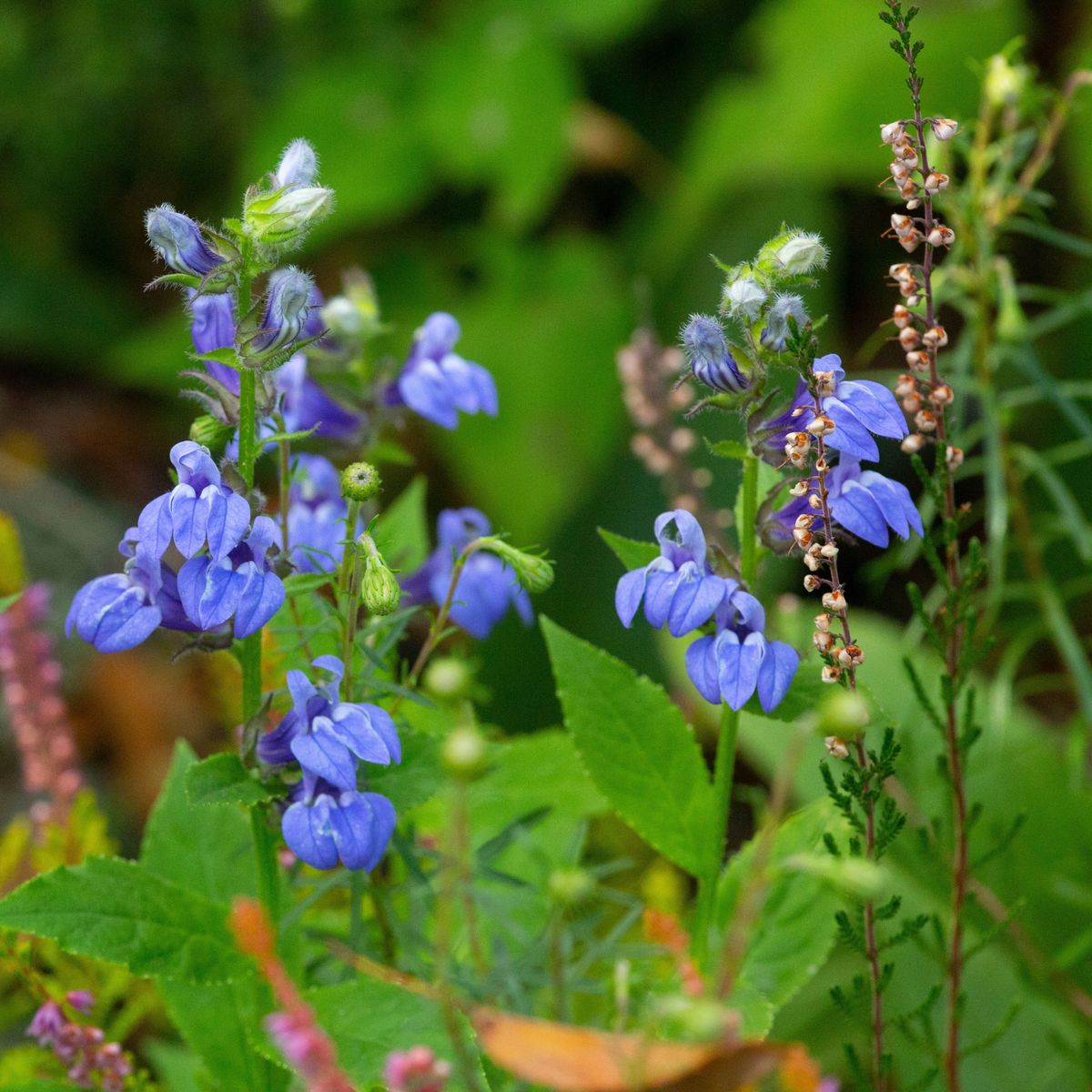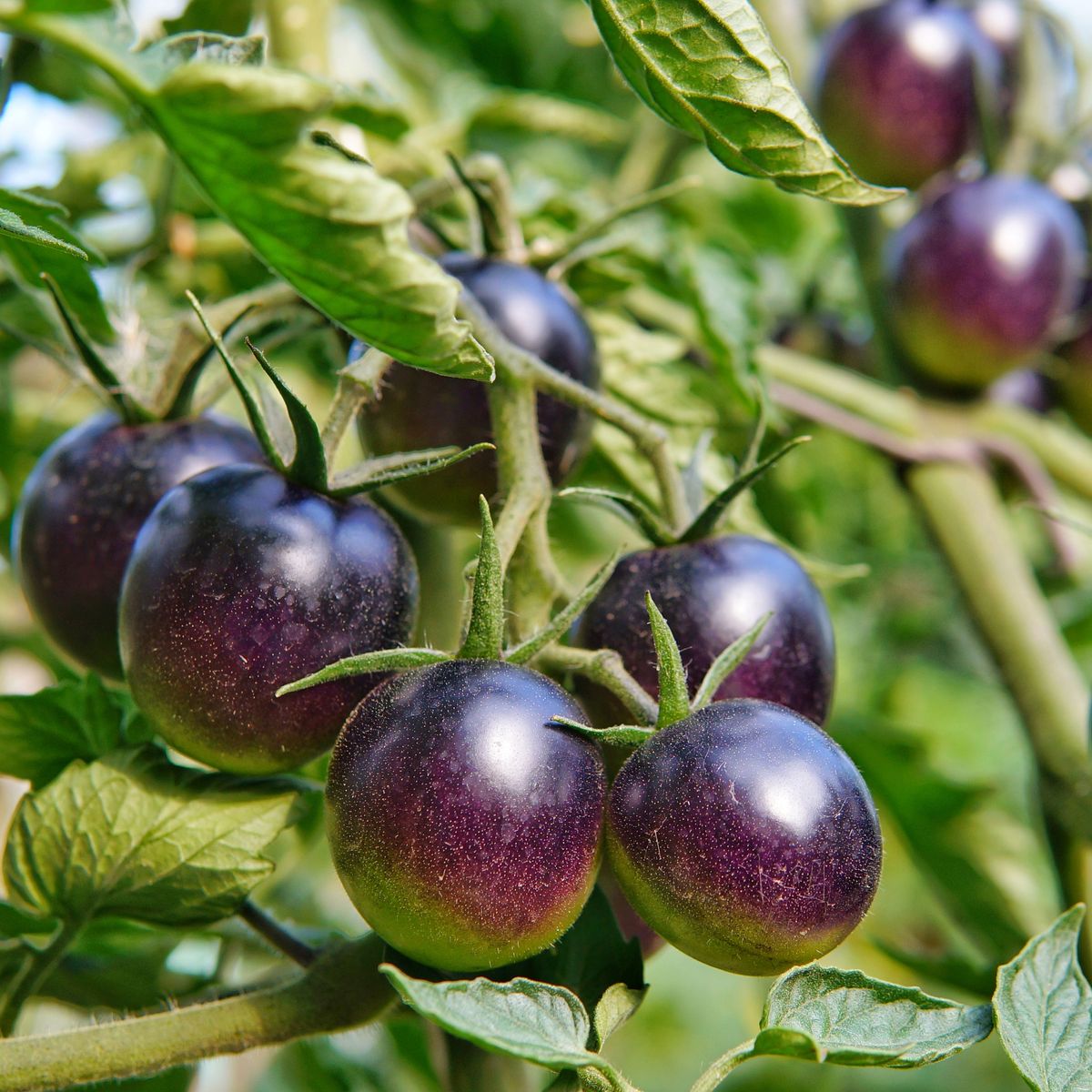The Potato is widely cultivated in temperate regions, and its stem tubers, which grow underground, are a popular food. The plant comes from South America where it was highly valued by the Indians. Its botanical name is Solanum tuberosum; it belongs to the family Solanaceae.
Potatoes can be cultivated in many different kinds of soil, but the finest crops are dug from well-drained loamy land. They may be planted on the same site year after year with good results if the ground is maintained in a fertile condition by liming, manuring and so on. In a garden of moderate size, however, it is wise to include the Potatoes in any system of rotation of crops which may be practiced so that they shall have a change of soil periodically.
Preparing the Ground.
The ideal way to prepare heavy, clayey land for Potato cultivation is to plow or dig it in autumn; it is left in a rough condition throughout the winter months. When the ground dries in spring the soil will break into small particles….in other words, it will be friable when harrowed or forked over. Exposure to rain, frost and wind does immense good to land of this type.
If this plan cannot be followed, it’s the custom of some gardeners who have to plant Potatoes on clayey land to plant as they dig. The tubers, set in a shallow trench, are covered by soil as the digging proceeds. This method is advantageous because once the site is planted it is not compressed on again until late spring or early summer, when the first weeding is done, and by that time the surface will have dried.
Light or well-drained loamy soil should be dug in spring, manure or compost being buried in the trench as the work proceeds.
It is not necessary or desirable to manure land heavily for Potato cultivation in the garden. A moderate dressing of decayed manure or compost put on the soil and mixed with it, and supplemented by several applications of a suitable complete fertilizer, will ensure satisfactory results.
Sprouting.
The preparation of the sets or planting tubers, commonly called “seed potatoes,” is a matter of great importance because it has a considerable effect on the yield. It has been found that if Potato tubers already possessing a few sprouts are planted, a heavier crop will result than if dormant or unsprouted tubers are used.
Tubers required for planting in spring should be chosen carefully; those weighing about 2 oz., or the size of a small hen’s egg, are considered to be the most suitable. Larger tubers may, however, be used; they can be cut into pieces, each part to include a few sprouts, at planting time. To produce sprouts the tubers are set on end in shallow boxes, or specially made trays having short wooden legs which allow of their being placed on top of each other to save space. This is done 2-4 weeks before planting time.
What is called the “rose” end of the tuber, that which possesses the greater number of “eyes” or buds, is placed uppermost. The boxes or trays must be in a light, fairly warm place; there the tubers start into growth and by planting time will possess several short, sturdy sprouts. It is necessary that the tubers be fully open to the light or the sprouts will be weak and “drawn.”
Sprouting before planting them is strongly to be recommended for all types, but it is especially necessary in the cultivation of early varieties; Potatoes treated in this way will start into growth sooner than dormant tubers.
Reducing the Number of Sprouts.
Before the tubers are planted the question of the number of sprouts to be left on each one must be decided.
If only one sprout is left on each tuber, the crop will consist of a limited number of large Potatoes; if two sprouts are left there will be a large number of large Potatoes, and others of good size; if three sprouts are left there will be a certain number of small tubers, although most of them will be large or fair sized. If all the sprouts are left on, or if dormant tubers are planted, the number of small Potatoes will be still greater.
For general garden cultivation the best practice is to leave two or three sprouts on each of the tubers.
There is no doubt as to the advantages of sprouting the tubers before planting, and limiting the number of sprouts. This ensures early development and a minimum of small Potatoes, and thus prevents waste of crop.
Potatoes as a Cleaning Crop.
Those who are faced with the problem of making a new garden on land which has not been cultivated previously or which has been out of cultivation for many years, and bringing the soil into good condition for sowing or planting, will find it an excellent plan to crop it with Potatoes for the first year. There is no better cleaning crop for new land.
The site should be plowed or dug in spring to get rid of tree roots and as many perennial weeds as possible. The Potatoes are planted in spring. During the summer months the practices of weeding, hoeing and earthing-up will help very considerably to cultivate the land, break down lumpy soil and get rid of coarse weeds. By the end of the summer, or early autumn, the ground will be in first-rate condition for sowing or planting after the crop of Potatoes has been lifted.
It is most important to have the site thoroughly prepared where it is intended to make a new lawn by sowing Grass seeds, and Potato cultivation is ideal preparation. Early September is a suitable time to sow the Grass seeds, and if a crop of early Potatoes is grown they will be off the ground by the end of August, thus allowing time for the final leveling and seedbed preparation. The Potato tops, or vines, should be burnt on the site, together with any other garden rubbish which has to be destroyed; this practice helps to get rid of weed seeds and seedling weeds and thus saves labor later.
There are two chief types or classes of Potato —the Early, and the Maincrop or Late; numerous varieties of each type are available.
The First Plantings.
The earliest crops of Potatoes are produced from plantings of Early varieties made as soon in spring as soil and weather conditions allow. This will normally be 1-2 weeks before the average date of the last killing frost in the locality but in sheltered locations (such as on a south-facing slope protected from cold winds by a windbreak or hedge) on sandy soils they may be planted 3-4 weeks before the average date of the last killing frost. This latter date varies considerably, of course, according to geographical locality. Gardeners not familiar with it, as it applies to their own gardens, may obtain information from the County Agricultural Agent of the county in which they live or may be guided as to when to plant by the practices of local experts.
On heavy (clayey) soils planting cannot be done quite as early as on light (sandy) ones. Under no circumstances should planting be done until the soil is in a workable, crumbly condition; planting in wet, sticky soil is sure to bring disappointing results.
As soon as young shoots from the Potatoes show through the surface of the ground and are 2-3 in. tall, soil should be drawn (hilled) up to them with a hoe or plow so that all except the very tips of the shoots is covered; this serves as a protection against cold.
Tubers (sets) of Early Potatoes are planted 4 in. deep and 12-15 in. apart in rows spaced 18-24 in. apart. It is a great advantage to place a layer of compost or decayed manure in the furrows before planting. The tubers root freely into either of these materials, and vigorous growth is thus promoted.
Early Potatoes may be dug as soon as the tubers of the new crop are large enough to use. This can be ascertained by lifting a plant or two as a trial, and will usually be within 10-12 weeks from the time of planting.
Plants need not be all lifted at once; the better plan for the home gardener is to dig his Early Potatoes as he needs them for table use, and thus to extend the harvest over a period of several weeks. It must be remembered that the Potato plants have not completed their season’s growth when the first ones are lifted at the end of 10 or 12 weeks; if the plants are left in the ground the tubers will increase in size and number (and thus give a heavier crop) for some time after these Potatoes have been removed.
Early varieties of Potatoes will have completed their growth and matured by July or August, according to locality, by which time Maincrop varieties will be available for digging for immediate table use. Early varieties should be all lifted when maturity is reached, which is evidenced by the tops’ dying down naturally.
It cannot be said that Potatoes need a great deal of attention during the summer months; the two details of chief importance are weeding and forking. As soon as the tops show through the soil, the ground between the rows should be forked over shallowly, the soil is broken down into small particles. Later on, it should be hoed frequently to keep down weeds. The work of forking will then be a comparatively simple matter for the soil will be friable and easily moved. Forking when the soil is hard and lumpy is a laborious task and it cannot be carried out satisfactorily.
Fertilizers for Potatoes.
Before the soil is forked, fertilizer should be applied alongside the plants. Specially compounded mixtures made for the purpose are sold by nurseries and horticultural stores and will be found beneficial. Or the following mixture will be found satisfactory: superphosphate, five parts, and sulphate of ammonia, two parts, the mixture being applied at the rate of 3 oz. per yard run of row.
Earthing-up(forking) is done by drawing up the soil on each side of the row so that it supports the Potato stems and leaves only a few inches of vine or growth exposed. It should not be completed on one occasion. The first earthing-up is done when the Potato tops are about 6 in. high and the second about four weeks later. The purpose of earthing-up is to support the stems of the plants and to protect the tubers and help their development.
A second planting of early Potatoes may be made 2-3 weeks after the earliest kinds. The tubers are set 5 in. deep, and 15 in. apart, in rows 24 in. from each other. They should be treated in the way already explained so far as the details of sprouting the tubers, planting, the use of fertilizers and earthing-up are concerned.
Late or Maincrop Potatoes.
These are planted in about 6 weeks after the first earlies; they provide the chief supply during the winter and early spring months and will be ready to be lifted in September. The tubers are set 5 in. deep and 18 in. apart in rows, 2-2 1/2 ft. from each other. It is a mistake to crowd them, for that prevents the soil from being properly cultivated between the rows. The other details of management—sprouting the tubers, planting, the application of fertilizers and earthing-up—are carried out in the way already described. In the home garden it is usually best to concentrate on early crops; late potatoes need a good deal of care with spraying.
Lifting Potatoes.
There is no advantage in leaving Potatoes in the ground after the leaves have turned yellow; it is, in fact, unwise to do so, for there they are exposed to risk of damage by soil pests of various kinds.
After they have been dug, the Potatoes should be left on the ground for two or three hours if the weather is fine, so that the skins may harden before they are stored. If the weather is wet it is a good plan to spread them out under cover of a shed or other suitable place.
Storing Potatoes.
The Potatoes must not be exposed to the light for more than a few hours or they will begin to turn green and will thus be rendered unfit for use in the kitchen. When dry, they may be stored in sacks or boxes, in any cool, dark, frostproof place. Only sound Potatoes should be stored in bulk; if diseased ones are put away with sound ones, the latter may also be spoiled. A winter storage temperature of 35-40 degrees is desirable for best results.
There are a large number of varieties of Potato. These will be found in our seed section on the left bar.











